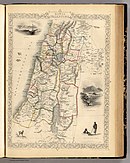Related Research Articles

Galilee is a region located in northern Israel and southern Lebanon consisting of two parts: the Upper Galilee and the Lower Galilee.

Nazareth is the largest city in the Northern District of Israel. In 2022 its population was 78,007. Known as "the Arab capital of Israel", Nazareth serves as a cultural, political, religious, economic and commercial center for the Arab citizens of Israel. The inhabitants are predominantly Arab citizens of Israel, of whom 69% are Muslim and 31% Christian. The city also commands immense religious significance, deriving from its status as the hometown of Jesus, the central figure of Christianity and a prophet in Islam and Baha'i'sm.

Canaan was a Semitic-speaking civilization and region of the Southern Levant in the Ancient Near East during the late 2nd millennium BC. Canaan had significant geopolitical importance in the Late Bronze Age Amarna Period as the area where the spheres of interest of the Egyptian, Hittite, Mitanni, and Assyrian Empires converged or overlapped. Much of present-day knowledge about Canaan stems from archaeological excavation in this area at sites such as Tel Hazor, Tel Megiddo, En Esur, and Gezer.

Caesarea also Caesarea Maritima, Caesarea Palaestinae or Caesarea Stratonis, was an ancient and medieval port city on the coast of the eastern Mediterranean, and later a small fishing village. It was the capital of Roman Judaea, Syria Palaestina and Palaestina Prima, successively, for a period of c. 650 years and a major intellectual hub of the Mediterranean. Today, the site is part of the Caesarea National Park, on the western edge of the Sharon plain in Israel.
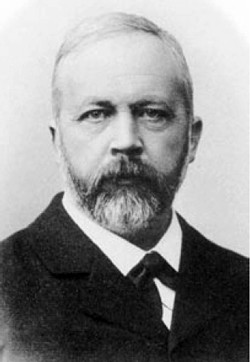
Julius Wellhausen was a German biblical scholar and orientalist. In the course of his career, his research interest moved from Old Testament research through Islamic studies to New Testament scholarship. Wellhausen contributed to the composition history of the Pentateuch/Torah and studied the formative period of Islam. For the former, he is credited as one of the originators of the documentary hypothesis.

The Southern Levant is a geographical region that corresponds approximately to modern-day Palestine, Israel, and Jordan; some definitions also include southern Lebanon, southern Syria and/or the Sinai Peninsula. As a strictly geographical description, it is sometimes used by archaeologists and historians to avoid the religious and political connotations of other names for this area.
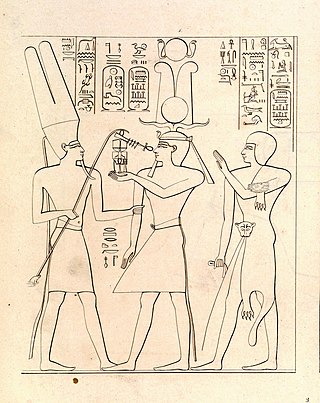
Hedjkheperre Setepenre Shoshenq I —also known as Shashank or Sheshonk or Sheshonq I—was a pharaoh of ancient Egypt and the founder of the Twenty-second Dynasty of Egypt.
Shishak, also spelled Shishaq or Susac, was, according to the Hebrew Bible, an Egyptian pharaoh who sacked Jerusalem in the 10th century BC. He is usually identified with the pharaoh Shoshenq I.
The population of the region of Palestine, which approximately corresponds to modern Israel and the Palestinian territories, has varied in both size and ethnic composition throughout the history of Palestine.
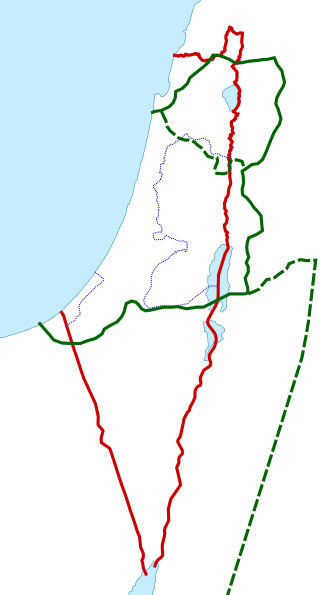
The region of Palestine, also known as historic Palestine, is a geographical area in West Asia. It includes modern-day Israel and Palestine, as well as parts of northwestern Jordan in some definitions. Other names for the region include Canaan, the Promised Land, the Land of Israel, or the Holy Land.

Emmaus is a town mentioned in the Gospel of Luke of the New Testament. Luke reports that Jesus appeared, after his death and resurrection, before two of his disciples while they were walking on the road to Emmaus.
Klaus Koch was an Old Testament scholar.

Fritz Hommel was a German Orientalist.
The history of the Jews and Judaism in the Land of Israel begins in the 2nd millennium BCE, when Israelites emerged as an outgrowth of southern Canaanites. During biblical times, a postulated United Kingdom of Israel existed but then split into two Israelite kingdoms occupying the highland zone: the Kingdom of Israel (Samaria) in the north, and the Kingdom of Judah in the south. The Kingdom of Israel was conquered by the Neo-Assyrian Empire, and the Kingdom of Judah by the Neo-Babylonian Empire. Initially exiled to Babylon, upon the defeat of the Neo-Babylonian Empire by the Achaemenid Empire under Cyrus the Great, many of the Jewish exiles returned to Jerusalem, building the Second Temple.
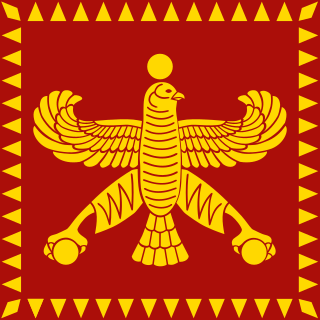
Eber-Nari (Akkadian), also called Abar-Nahara (Aramaic) or Aber Nahra (Syriac), was a region of the ancient Near East. Translated as "Beyond the River" or "Across the River" in both the Akkadian and Aramaic languages, it referred to the land on the opposite side of the Euphrates from the perspective of Mesopotamia and Persia. In this context, the region is further known to modern scholars as Transeuphratia. Functioning as a satrapy, it was originally administered by the Neo-Assyrian Empire before being absorbed by the Neo-Babylonian Empire and then by the Achaemenid Empire. During the Greek conquest of Persia, Eber-Nari was, like the rest of the Achaemenid Empire, annexed by the Macedonian Empire of Alexander the Great. It was later dissolved by the Seleucid Empire, which incorporated it into Syria, along with Assyria.
Dieter Vieweger, a Biblical scholar and Prehistoric Archaeologist, was born in Chemnitz, East Germany in 1958. He studied Theology and Prehistoric Archaeology in Leipzig and Frankfurt am Main. After that he held a number of distinguished research and educational positions. Today he teaches at the „Kirchliche Hochschule Wuppertal“, and the universities of Münster and Witten-Herdecke while also being the director of scientific institutes in Jerusalem and Amman as well as in Wuppertal.
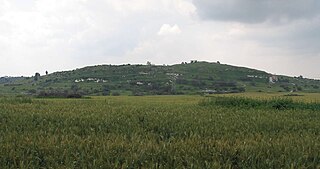
Tell es-Safi was an Arab Palestinian village, located on the southern banks of Wadi 'Ajjur, 35 kilometers (22 mi) northwest of Hebron which had its Arab population expelled during the 1948 Arab–Israeli war on orders of Shimon Avidan, commander of the Givati Brigade.
Tuttul was an ancient Near East city. Tuttul is identified with the archaeological site of Tell Bi'a in Raqqa Governorate, Syria. Tell Bi'a is located near the modern city of Raqqa and at the confluence of the rivers Balikh and Euphrates.

The Land of Israel is the traditional Jewish name for an area of the Southern Levant. Related biblical, religious and historical English terms include the Land of Canaan, the Promised Land, the Holy Land, and Palestine. The definitions of the limits of this territory vary between passages in the Hebrew Bible, with specific mentions in Genesis 15, Exodus 23, Numbers 34 and Ezekiel 47. Nine times elsewhere in the Bible, the settled land is referred as "from Dan to Beersheba", and three times it is referred as "from the entrance of Hamath unto the brook of Egypt".
Mandaic lead rolls, sometimes also known as Mandaic amulets or sheets, are a specific term for a writing medium containing incantations in the Mandaic script incised onto lead sheets with a pin. Some Mandaic incantations are found on gold and silver sheets. They are rolled up and then inserted into a metal capsule with loops on it to be worn around the neck on a string or necklace.
References
- ↑ S. Parpola, Neo-Assyrian Toponyms, Alter Orient und Altes Testament. Veröffentlichungen zur Kultur und Geschichte des Alten Orients und des Alten Testaments 6, Neukirchen-Vluyn, 1970, p. 116
- ↑ R. Zadok, Geographical Names According to New and Late-Babylonian Texts, Beihefte zum Tübinger Atlas des Vorderen Orients, Répertoire Géographique des Textes Cunéiformes 8, Wiesbaden, 1985, p. 129
- ↑ Chronology of the Israelite Tribes from The History Files (historyfiles.co.uk)
- ↑ Dandamaev, M (1994): "Eber-Nari", in E. Yarshater (ed.) Encyclopaedia Iranica vol. 7.
- ↑ Drumbrell, WJ (1971): "The Tell el-Maskuta Bowls and the 'Kingdom' of Qedar in the Persian Period", BASOR 203, pp. 33–44.
- ↑ Tuell (1991): "The Southern and Eastern Borders of Abar-Nahara", BASOR n. 234, pp. 51–57
- 1 2 "Satrapies". Archived from the original on 7 April 2016. Retrieved 26 March 2020.
- ↑ "From Arrian, the Anabasis of Alexander". www.luc.edu. Archived from the original on 22 October 2003. Retrieved 22 May 2022.
- 1 2 Guy le Strange (1890). Palestine Under the Moslems from AD 650 to 1500, Translated from the Works of the Medieval Arab Geographers. Florence: Palestine Exploration Fund.
- ↑ Neville J. Mandel (1976). The Arabs and Zionism before World War I. University of California Press. ISBN 0-520-02466-4.
The Ottoman Government employed the term "Arz-i-Filistin" (the "Land of Palestine") in official correspondence, meaning for all intents and purposes the area to the west of the River Jordan which became "Palestine" under the British in 1922
- ↑ James Redhouse (1856). An English and Turkish dictionary – via books.google.com.
